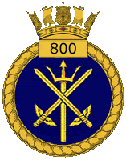 |
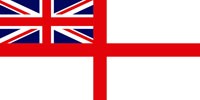 |
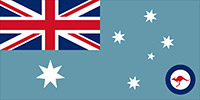 |
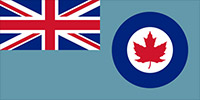 |
 |
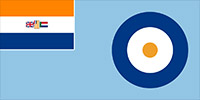 |
Royal Navy Fleet Air Arm 800 Naval Air Squadron
Motto: -
Formed on 3 April 1933 by amalgamating No's 402 and 404 (Fleet Fighter) Flights. The squadron was equipped with nine Nimrods and three Ospreys and served aboard HMS Courageous in the Home Fleet. In 1935-1936, the carrier and the squadron operated in the Mediterranean during the Abyssinian crisis. The squadron re-equipped with the Skua in October 1938 and took these aboard HMS Ark Royal.
RN 800 Naval Air Squadron
Brief History of 800 Squadron was formed on 3rd April 1933 from 402 & 404 Fleet Fighter Units, and consisted of 9 Nimrods & 3 Ospreys. 1 month after forming, it embarked on HMS Courageous.
In 1938 the squadron re-equipped with Skuas, and embarked on HMS Ark Royal. At the outbreak of the 2nd World War, 800 Squadron & Ark Royal patrolled the South Atlantic, where one of its finest victories was their involvement in the sinking of the German Cruiser Konigsberg at Bergen, known as Operation Tungsten.
Operation Tungsten:
The Königsberg was a German light cruiser. In April 1940, the Königsberg was supporting the German invasion of Norway. During a battle between Norwegian Harbour Defences and the German Forces, the Königsberg took a hit, which damaged its engines and two of her anti aircraft positions. As her engines were damaged, she was unable to leave the harbour.
At 05:15 on the 10th April 1940, 5 aircraft from 800 Sqdn, along with 11 aircraft from 803 Sqdn took off from their base in the Orkneys, heading for Bergen harbour. The Skuas arrived at Bergen at 07:20 and circled the harbour, before diving at the Königsberg and dropping 500 lb bombs. Two direct hits midships, and another near the bow caused the ship to start to sink and the crew were unable to control the fires on board. The ship sank 2 hours 45 mins after the last Skua attack. This was the first sinking of a major warship in wartime, by aerial bombing).
Additional Source:
In 1941 the squadron transferred to HMS Furious at Gibraltar, where they took part in an attack on the Arctic port of Petsamo. In 1942 the squadron received Sea Hurricanes and took part in the North African landing on HMS Biter.
The squadron became the first to receive Hellcats in 1943. At the end of the war, 800 Squadron returned to the UK, and was disbanded on 5th December 1945.
800 Squadron was reformed in 1946, as a fighter squadron with 12 Seafire XVs, which were replaced in 1945 by the Seafire XVIIs for service with the 13th CAG (Carrier Air Group) on HMS Triumph in the Mediterranean Fleet. The Squadron operated in the Far East and took part in the Korean War. The squadron was disbanded on 10th November 1950.
At the beginning of the war, 800 was flying Skua and a few Rocs from HMS Ark Royal. Fighter patrols were carried out off Norway and submarine patrols in the NW approaches.
During the German invasion of Norway in 1940, whilst based at Hatston, 800 and 803 squadrons dive-bombed the German cruiser Konigsberg at Bergen. Squadron aircraft shot down six He111s. The 800 Squadron CO, Capt RT Partridge, RM was taken POW and four aircraft lost on an attack on the Scharnhorst. In July 1940, the squadron was involved in the attack on the French Fleet at Oran. Two SM 79 bombers shot down off Sardinia.
In the attack on the Konigsberg, 800 Sqdn provided 5 aircraft and 7 crews while 803 Sqdn provided 11 aircraft and 9 crews. The force took off at 5.15 am on the 10th April, 1940. They arrived over Bergen at 7.20 and made a quick circuit of the harbour, then the Skuas circled around and attacking the Konigsberg from behind the Floyen and the Ulriken mountains making their dives from prow to stern, dropping 500 lb bombs, most bombs being released between 1,500 to 3,000 foot above the target.
The Germans had 15 minutes warning of the approach of the dive bombers but only two 2cm guns on the prow of the ship could be bought to bear on the Skuas. The forward 3.7cm batteries of the Konigsberg had been destroyed by the Norwegian harbour defences and the heavy AA guns at the rear of the ship could not be bought to bear to fire forward over the main structure of the ship. Two Skuas had holes shot in their wings but these caused no major damage.
Two direct hits amidships of the Konigsberg were claimed and another near the bow. One bomb exploded next to the port side of the ship. Five bombs hit the harbour mole. The rest were near misses , mostly off the stern of the ship. The Konigsberg started sinking by the bows with flames rising from her. The damage caused by the bombs did not sink the ship directly, rather it was the inability of her crew to control the fires without the equipment damaged by the Norwegian shore batteries. Flooding caused by the bombing was minimal but could not be controlled because the Konigsbergs pumps were out of action due to the loss of electrical power. Magazines had to be deliberately flooded to stop the threat of fire reaching them. The Konigsberg finally sank some 2 hrs 45 mins after the Skua attack.
On the two squadrons return flight, while climbing through clouds, one of the Skuas went into a spin and crashed, killing the leader of 803 Squadron's third section. Lt.BJ Smeeton, and his crewman Mid. (A) F Watkinson. All the other aircraft made it back to their base on the Orkneys.
The squadron was regrouped with Fulmars in April 1941 at Gibraltar, proceeding with two Flights, to HMS Victorious to search for the Bismarck, and to HMS Argus. On regrouping in June 1941, the squadron joined HMS Furious for an attack on Petsamo, and after the West Indies onboard HMS Indomitable was involved in the Madagascar operations.
Sea Hurricanes were received in 1942 and took part in the North African landings in HMS Biter in November 1942.
In July 1943, 800 was the first FAA squadron to equip with the Hellcat. Joining No. 7 Naval Fighter Wing the squadron provided escort for April 1944 attacks against the German battleship Tirpitz from HMS Emperor.
Successful attack in Operation Tungsten of 3 April 1944 on the Tirpitz in Kaa Fjord, North Norway by 827 and 830 squadron Barracuda dive-bombers from HMS Furious and HMS Victorious and supported by the 7th Naval Fighter Wing including 800, 804, 881, 896, 882, and 898 fighter sqn
Royal Navy Hellcat I's (F6F-3) from 800 squadron were involved in escorting Barracuda attacks on the german battleship Tirpitz from April to August 1944 in Alta Fjord, Norway. One of these operations, on 8 May 1944, the Luftwaffe fighters flew up to protect the battleship. Some of the 800 squadron Hellcats from HMS Emperor went to attack the German aircraft and shot down 1 Fw-190 and two Bf-109G fighters. The Hellcats suffered one loss to the Luftwaffe and another to anti-aircraft fire. Sub Lt. B. Richie claimed the Focke-Wulf and went on to claim a total of 6 kills, becoming one of only a few Royal Navy Hellcat aces.
In June 1944, 804 squadron was absorbed and the squadron took part in the invasion of southern France in August 1944.
In May 1945 the squadron took part in the recapture of Rangoon, aircraft operating from HMS Shah and HMS Emperor. The squadron returned to the UK after the end of the war.
Battle Honors: Norway 1940, Mediterranean 1940-41, Spartivento 1940, Malta Convoys 1941-42, Norway 1940-44, 'Bismarck' 1941, Diego Suarez 1942, North Africa 1942, South France 1944, Aegean 1944, Burma 1945, Malaya 1945
In the Korean war the Seafires of 800 squadron flew 245 CAP missions, and 115 strike missions over Korea without a single loss to enemy fire.
Commanding Officers and Squadron Personnel
L/C GN Torry, RN (Flt Lt, RAF) Nov1938 - April 1940
Lt EGD Finch-Noyes, RN (Temp) May 1940-June 1940
Capt RT Partridge, RM April 1940-May 1940
Lt EGD Finch-Noyes RN (Temp) May 1940-June 1940
LtRD Smeeton, RN June 1940-May 1941
L/C JAD Wroughton DSC, RN May 1941-March 1942
L/C JM Bruen DSC, RN March 1942-Dec 1942
L/C H Muir-Mackenzie, DSC, RN Dec 1942-July 1943
L/C SJ Hall, DSC, RN July 1943-Sept 1944
L/C Fell, DSC, RN Sept 1944-Dec 1944
L/C (A) DB Law, DSC, RN Dec 1944-May 1945
L/C H De Wit, RNethN May 1945-Dec 1945History HMS Emperor (D-98)
HMS Emperor (D-98) was built in the USA at Seattle-Tacoma, where she was laid down on 23 June 1942 as USS Phybus AVG-34, and commissioned in the USN on May 1943 as CVE-34. She was launched on 7 October 1942 and subsequently transferred to the Royal Navy on 31 May 1943, after which she was commissioned 6 August 1943.
Emperor was one of the third group of escort carriers built in the USA for the Royal Navy, and was generally similar to the preceding ‘Attacker’ Class ships. The modifications carried out to the earlier class after their arrival in the UK were incorporated in the ‘Ruler’ Class during construction. Many of the class were used as amphibious support carriers, taking part in the invasion of Southern France. Others supported Eastern Fleet operations against Burma and Malaya, and some served with the British Pacific Fleet as escorts for the Fleet Train.
HMS Emperor saw war service in the Atlantic, Norway, Mediterranean and East Indies. As a fighter carrier 1943-44 she provided cover for Barracuda strike aircraft during Operation ‘Tungsten’ 3 April 1944 against the German battleship Tirpitz in Kaa Fjord, Norway, and her duties were subsequently as an assault carrier 1944-45. She returned to the USN on 4 February 1946 and was scrapped.
Originally two US maritime Commission hulls were earmarked for transfer to the Royal Navy as escort carriers with the ships' name 'Emperor':
Carrier name HMS Emperor Ex USS Phybus AVG-34 Class Ruler Type Fighter and Assault Escort Carrier (US built) Ships in same Class Ameer, Arbiter, Atheling, Begum, Emperor, Empress, Khedive, Nabob, Patroller, Premier, Puncher, Queen, Rajah, Ranee, Reaper, Ruler, Shah, Slinger, Smiter, Speaker, Thane, Trouncer, Trumpeter Launched Laid down 23 June 1942. Launched 7 Oct 1942. Handed Over Transferred 31 May 1943, Commissioned 6 Aug 1943 Tonnage 8,333 tons Gross displacement 14,000 tons Load 5667 tons Engines 2 x Foster-Wheeler boilers; 2 x Westinghouse geared turbines at 8500 shp, 1 shaft Speed in Knots 18 knots Armament Gun 2 x 1 x 5″/38-cal DP 8 x 2 x 40mm AA 27-35 x 1 x 20mm AA Crew Complement 646 Officers & Ratings including Air Group Range Length (ft/inches) 496 Beam (ft/inches) 69′ 6″ Draught (ft/inches) 23′3″ Flight Deck length (ft/inches) 470′ Flight Deck width (ft/inches) 70′ Armour Number of aircraft carried 18-24 Fate of carrier returned to USN 4 Feb. 1946 and scrapped. Notes Emperor (1)
On 19 April 1943, the keel was laid for a Casablanca class auxiliary aircraft carrier at the Kaiser Shipyard, Vancouver, Washington. She was w intended for transfer to the Royal Navy under Lend-Lease arrangements as the HMS Emperor, however, the US Navy decided that she (and other escort carriers building for Britain at that time) would be required for the US war effort. Subsequently the Emperor was renamed the USS NASSUK BAY on June 28th 1943, and was launched October 6th 1943. Delivered to the U. S. Navy 6 November 1943, she was again renamed, commissioning as the USS SOLOMONS November 21st 1943.Emperor (2)
The second auxiliary aircraft carrier earmarked to be named HMS Emperor began her carrier as the USS PYBUS (ACV-34), a Bogue class escort carrier. Her keel being laid down 23 June 1942 at Seattle-Tacoma Shipbuilding Corp., Tacoma, Washington, Maritime Commission C3 hull number 245, Seattle-Tacoma hull number 29;. She was launched 7 October 1942, her hull being towed to the Puget Sound Navy Yard, Washington for completion.On completion she was commissioned into the US Navy on May 31st 1943 and after working up she undertook a ferry voyage from San Diego to Pearl Harbour. The USS Pybus was then selected for transfer to the UK under the lend-lease agreement that existed between the US and Britain. ON her return from Pearl Harbour she passed through the Panama Canal and steamed to Brooklyn Navy Yard, New York, where she was de-commissioned on August 6th 1943 and transferred to the Royal Navy. The ship was recommissioned as HMS Emperor (Pennant number D98) on the same day, under the command of Captain Thomas J. N. Hilken RN.
[Emperor was originally to have been named 'Stinger' but the name was change before the ship was accepted by the Admiralty.]
While alongside in Brooklyn HMS Emperor embarked a ferry cargo of aircraft for delivery to the UK; she was to sail with the Liverpool bound convoy HX 253 departing from New York on August 20th to make the Atlantic crossing.
Upon her arrival on the Clyde on September 3rd she was allocated to Western Approaches Command. After unloading stores and aircraft Emperor proceeded to Belfast where she entered a dockyard for modification to RN standards on September 7th. This work was completed by the beginning of December and the ship put to sea for a work-up in the Irish Sea. Part of this work-up involved giving experience to the ship's air departments when 800 and 804 Naval Air Squadrons (No. 7 Naval Fighter Wing, equipped with Hellcats) embarked on December 5th; 800NAS remained onboard for one weeks flying training, returning to RNAS Eglinton, Northern Ireland, on the 11th.
On January 11th 1944 800 NAS re-embarked and the ship sailed for Norfolk, Virginia (most probably escorting convoy ON 219 which departed Liverpool on January 8th for New York) where she arrived on January 25th; both 800 and 804 Squadrons disembarked to US Naval Air Station Norfolk until rejoining the ship on February 5th. From Norfolk Emperor proceeded to Argentina, Newfoundland to join the east bound convoy HX 278 which had departed from New York on the 5th for Liverpool via Halifax; the convoy left Halifax on February 7th, Emperor left the convoy off Ireland and preceded to the Clyde on the 18th, her squadrons disembarking to RNAS Eglinton.
On March 6th 800 and 804 squadrons rejoined the ship for passage to Scapa Flow, Orkney where she was allocated to the Home Fleet on March 18th for operations off the coast of Norway.
Offensive operations April - June 1944
Emperors' first offensive tasking was Operation "Tungsten" which commenced on April 3rd. Emperor operated in company with the fleet carriers Victorious and Furious, and the CVEs Pursuer, Searcher, and Fencer in carrying out the first strike by aircraft of the Home Fleet against the Tirpitz in Kaafjord, Norway. Some damage was caused to the Tirpitz, while the supply ship CA Larsen was severely damaged. Emperor lost one aircraft during this operation, S/Lt. Hoare RNZN of 800Sqn ditched near the ship and was rescued by one of the escort group.
After withdrawing to Scapa both squadrons disembarked to RNAS Hatston, Orkney, on April 6th. This was a short break before re-embarking on the 11th to prepare for Operation "Planet", a repeat of "Tungsten" taking place on April 24th utilizing the same force; this was cancelled however due to bad weather. The weather situation improved sufficiently for the next round of operations to be carried out on the 26th. This was operation "Ridge Able" which saw Emperor, in company with the Fleet carriers Victorious, Furious, and the CVEs Pursuer, Searcher, and Striker, to conduct attacks on enemy shipping in Bodo and Rorvik areas respectively. A second stage, codename "Ridge Baker" had to cancelled, again due to bad weather. However "Ridge Able" did result in 3 ships sunk off Bodo and a 4th damaged. Operation "Ridge Able" cost Emperor two pilots, S/Lt. Brine of 804Sqn died from his injuries after his aircraft struck the rounddown on landing after the strikes, and S/Lt. Roncoroni of 800Sqn failed to return, ditching south of Bodo after being hit by flak and was taken prisoner.
A further round of anti-shipping strikes were conducted in May, the first being Operation "Hoops", on the 8th in company with the CVEs Searcher and Striker which saw attacks on shipping between Gossen and Kristiansand North, as well as strikes against oil tanks at Kjehn and a fish oil factory at Fossevaag. Five enemy aircraft were destroyed by the escort fighters; Pilots from 800Sqn accounted for three of these. One Bf109 fell to S/Lt. JG Devitt and a second was shared by S/Lt. TH Hoare RNZN & S/Lt. ID Scarves RNZN, and Lt B Ritchie RNVR shot down Fw190. One pilot was lost; S/Lt. RL Thompson was shot down by German fighters 7m off Smolen Island and was drowned.
Operation "Hoops" was followed on the 14th by Operation "Potluck A", an attack on shipping at Rorvik, in company with Striker. The strike resulted in three enemy merchant ships hit and damaged by bombs. S HellS floatplanes were strafed and destroyed by pilots from Emperor's 800 squadron; Lt. B Ritchie RNVR and Lt. Cdr SG Orr who scored one kill each and shared a further one each with S/Lt. TH Hoare RNZN along with S/Lt. R Hooker RNZN. One pilot, S/Lt. RS Hollway, flying Hellcat JV13S returned to the ship off Vikna but his undercarriage jammed halfway down; he was forced to abandon his aircraft and baled out but was drowned before he could be rescued. Phase two, Operation "Potluck B", was launched the following day, again in company with HMS Striker; this involved a further attack being made on the fish oil factory at Fossevaag. Two armed trawlers were strafed and sunk. On the 16th the force withdrew to Scapa, This was Emperor's last operation with the Home Fleet; she was re-allocated to Western Approaches Command and was ordered to proceed to the Clyde.
Emperor was to spend the next few weeks providing air cover for anti-submarine forces and convoys operating in the western approaches. Air coverage was provided for the Gibraltar/Freetown bound convoys OS78/KMS52, which departed Liverpool on May 22nd and the Liverpool bound SL158/MKS49 which departed Gibraltar on May 29th. On handing off her charges Emperor next joined the CVEs Pursuer and Tracker for the naval part of the D-Day landings in Normandy, Operation "Neptune" giving fighter cover over the western approaches to the English Channel from June 5th. On June 18th 804 NAS was disbanded, its equipment and aircrew being absorbed into 800 NAS to form a single squadron with a strength of 20 Hellcats. The squadron disembarked to RNAS Ayr the following day as Emperor returned to the Clyde to prepare for passage to the Mediterranean for her next operations.
Offensive operations July - November 1944
HMS Emperor sailed for the Mediterranean on July 15th with 800 (Hellcat) NAS and a single Walrus from 700 NAS for search and rescue duties embarked. She was to become part of a group of seven Royal Navy escort carriers operating in the Mediterranean and the Aegean, these were Attacker, Emperor, Hunter, Khedive, Pursuer, Searcher, and Stalker.
Emperor's first offensive operations in this theatre were as part of Operation "Dragoon", the invasion of southern France which commenced on August 12th. For this operation Emperor operated in company with the CVEs Attacker, Khedive, Pursuer and Searcher, as part of Task Group 88.1; this task group was under Rear Admiral Sir Thomas Troubridge in the cruiser Royalist. The CVEs Hunter and Stalker joined the USN escort CVEs Tulagi and Kasaan Bay in Task Group 88.2 under Rear Admiral C T Durgin USN.
Between the 15th and the 19th aircraft from Emperor operated in support of the allied landings, withdrawing to Maddalena, Sardinia for replenishment on the 20th. Sailing again on the 21st Emperor's Hellcats carried out long ranging interdiction sorties up the Rhone Valley and over much of southern France, withdrawing again to Maddalena on the 24th after having flown 252 operational sorties for the loss of 11 aircraft. 10 serviceable aircraft and 4 more that were repairable were left on board. After replenishment Emperor departed for Alexandria, where she arrived on September 2nd.
Emperor was in action again by September 14th, when she began a series of strike operations in the Aegean in company with HMS Pursuer, beginning with Operation "Outing I" which involved 24 armed reconnaissance sorties near Milos, and attacking shore targets and shipping; the force returned to Alexandria for replenishment on the 21st. Further strikes were made from September 30th under the code name Operation "Outing II", This operation involved on the airfield at Maleme in Crete as well as anti-shipping sweeps, before returning to Alexandria.
Emperor sailed again from Alexandria on October 8th, this time in company with the cruiser Royalist, for further anti-shipping operations. In addition an attack was made by dive-bombing the Plimiri radar station on Rhodes, which was destroyed. Emperor and Royalist returned to Alexandria on the 13th for a brief replenishment before putting to sea again only a few hours later in company with the CVEs Attacker and Stalker, and destroyers Troubridge, Termagant, Tyrian, Tuscan and Garland to begin Operation "Manna", a further series of strikes in the Aegean, commencing in the area around the island of Rhodes. On October 19th Emperor anchored off the island of Khios to embark 113 German and Italian prisoners of war, while 8 of 800 squadrons Hellcats dive-bombed and destroyed a radar station on Milos.
Towards the end of October HMS Emperor began her final operation in the Mediterranean theatre, Operation "Contempt" which began on the 26th. Emperor's air group carried out strikes and bombardment spotting for the Battleship HMS King George V in preparation for the allied occupation of Milos. In addition to her Hellcats Emperor had embarked 1 Swordfish, for spotting duties, and a Walrus amphibian for combat search and rescue. In the whole series of operations in the Aegean, Emperor flew 455 sorties, more than double that achieved by any other carrier. On completion of Operation "Contempt" Emperor withdrew to Alexandria before she was ordered home to the UK for a refit in a Newport dockyard. She sailed from Alexandria on November 20th and arrived in Newport on the 29th.
Offensive operations 1945
While in the dockyard Captain Hilken left the ship for a new appointment as Captain, of HMS Bherunda (RN Air Station, Colombo, Ceylon), his replacement as commanding officer was Captain Sir Charles E. Madden, Bt RN who assumed the post on Jan 17th 1945. With her refit completed, Emperor was ready to re-embark 800 squadron for a short work-up period on February 25th before being allocated to the 21st Aircraft Carrier Squadron, part of the East Indies Fleet on March 1st, on which date she sailed from Newport bound for Ceylon via the Suez Canal.
Emperor Arrived at Colombo on March 25th and began working up with the fleet in preparation for her first operational outing, Operation "Sunfish" which began on April 4th, when Emperor in company with the CVE HMS Khedive conducted a photographic reconnaissance of Port Swettenham, Malaya and a strike on Emmahaven. This was followed by Operation "Dracula" on April 21st which involved strikes on the Rangoon and south-eastern Burmese coast, for this operation Emperor and Khedive were joined by the CVEs Hunter and Stalker. During the later part of operation "Dracula" 800 squadron operated detachments from two other CVEs, three aircraft operated from HMS Khedive and eight flew from HMS Shah (operating with Empress for operation "bishop" between 11 - 19 May before rejoining Emperor.
On May 10th shortly after returning to Trincomalee after 'DRACULA' operations Hunter, Khedive, Emperor and Shah were ordered to sea at short notice. The carriers were tasked to provide air support for the 3rd Battle Squadron as it swept across the Andaman Sea hunting for the Japanese Cruiser Haguro codenamed Operation 'Dukedom'. The Haguro was one of the last surviving major Japanese warships, and she had been reported as having put to sea. HMS Emperor was the only carrier to engage the Haguro; she was carrying HMS Shah's Avengers, these having been transferred after Shah's catapult went unserviceable - a type she was not equipped to support. A single Avenger located and attacked the Haguro but with little success. She was later sunk by the Battle Squadron's destroyers off Sumatra while attempting to return to Singapore.
After a brief break Emperor put to sea again on June 18th, a detachment of eight aircraft again joined HMS Shah from where they operated between June 24th and July 1st returning to Emperor in time for her next action, "Operation Collie" which commenced on July 2nd. "Collie" called for Emperor, in company with HMS Ameer, to carry out strikes on the Nicobar Islands and to provide air cover for minesweeping forces operating off Phuket Island. On completion of Operation "Collie" Emperor returned to Ceylon on July 19th and 800 NAS was disembarked to Royal Naval Air Station Katukurunda.
Emperor was next called into action at the start of September when together with sister CVEs Ameer, Empress, Hunter, Khedive, and Stalker they were tasked with the reoccupation of Singapore, code name Operation "Zipper". The force left Trincomalee on the 4th and arrived off Singapore Island on the 6th. On September 10th Emperor, Hunter, Khedive and Stalker anchored in Keppel Harbour, Singapore, Ameer and Empress were among 90 ships (including 70 RN and RIN warships, 3 Royal Fleet Auxiliaries, 3 hospital ships and 14 merchant vessels) present in Singapore Roads for the surrender ceremony which took place on the 12th.
After leaving Singapore Emperor proceeded to Southern India where she disembarked the aircraft of 800 Naval Air Squadron to Royal Naval Air Station Coimbatore on September 18th; the aircraft were to remain at Coimbatore as the squadron was stood down from active duties. After returning to Ceylon Emperor began loading stores and passengers in preparation for her return to the UK. She sailed from Trincomalee on October 30th calling at Colombo and Bombay before transiting the Suez Canal. Emperor arrived on the Clyde on December 4th to unload her passengers and stores; 800 squadron officially disbanded upon leaving the ship the next day.
With the war over HMS Emperor was no longer required for service in the Royal Navy and work began to prepare her for her return to the custody of the US Navy. As soon as her passengers had left work began de-storing her before she proceeded to Plymouth for the removal of specialist equipment and other stores beginning on January 8th 1946. On completion of this work she departed from the UK for the last time on January 23rd and set a course for Norfolk Navy Yard, Virginia.
HMS Emperor was de-commissioned, and CVE 34 returned to the U.S. Navy custody on February 12th 1946 at Norfolk. She was struck from the US Naval Vessel Register on March 28th 1946 and was sold to the Patapsco Scrap Corp, Baltimore on May 14th 1946 for breaking as scrap.
Squadrons and Aircraft operated from HMS Emperor
FAA Squadrons embarked Dates Aircraft type 800 Dec 1943-Sept 1945 Hellcat I/II 804 Dec 1943-June 1944 Hellcat I 808 dt Apr-45 Hellcat II 845 Apr-45 Avenger I 888 Apr-45 Hellcat II 851 dt May-45 Avenger I

 Editor for Asisbiz: Matthew Laird Acred
Editor for Asisbiz: Matthew Laird Acred
If you love our website please add a like on facebook
Please donate so we can make this site even better !!
